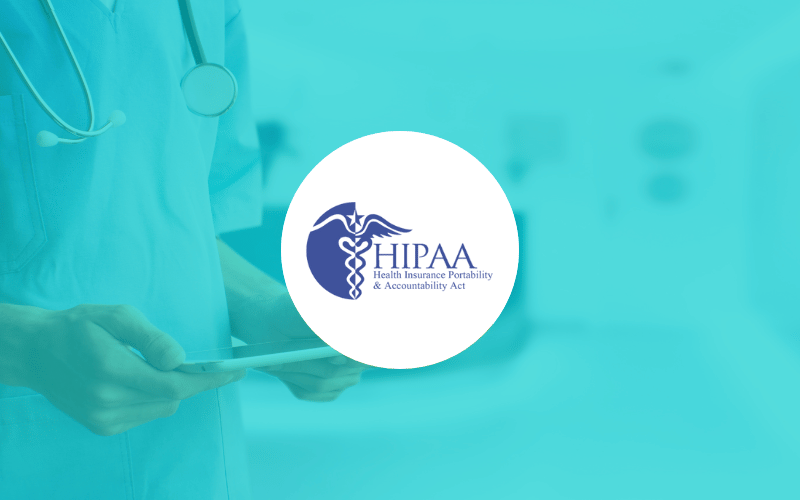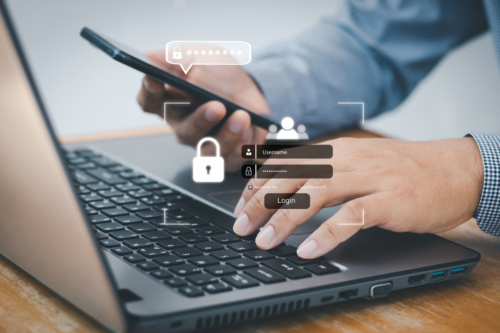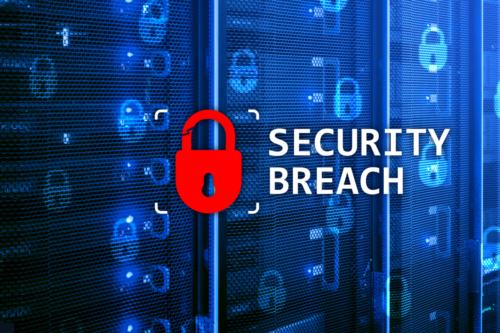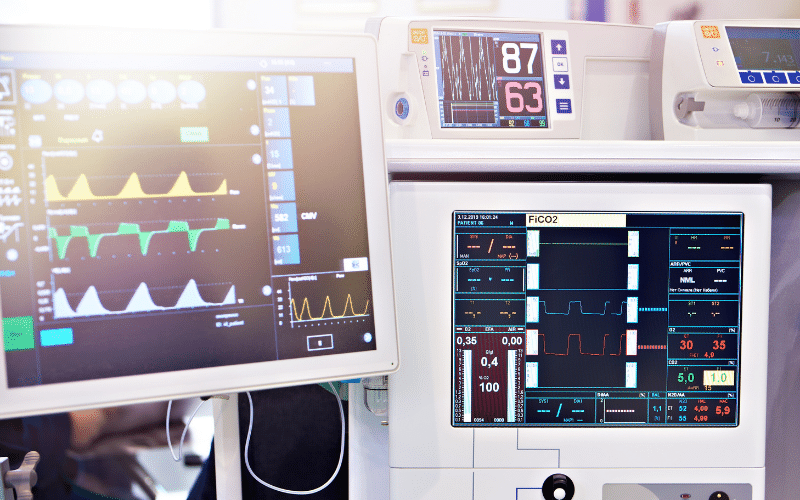HIPAA
PROTECT PATIENT DATA ACROSS THE NETWORK & REMAIN IN COMPLIANCE WITH HIPAA SECURITY REQUIREMENTS
Find out how Portnox’s zero trust access control solution can help your organization better support and align with the many cybersecurity and data protection requirements for protected health information (PHI) laid out in the Health Insurance Portability and Accountability Act (HIPAA).

NAC meets HIPAA security standards in more ways than one
Access Control
Portnox enables organizations to enforce access control policies by authenticating and authorizing users and devices before granting them access to the network. This helps ensure that only authorized individuals with a legitimate need can access PHI. Our NAC and TACACS+ solutions can verify user identities, enforce access control policies, and more.
Device Compliance
Enforce security policies on devices connecting to their network using Portnox’s cloud-native NAC by checking devices for up-to-date software patches, the presence of antivirus software, and more. Ensuring devices meet the required security standards, Portnox helps protect against potential vulnerabilities that could compromise PHI.
Endpoint Security
Portnox can easily integrate with Microsoft mobile device management (MDM) solutions like Microsoft Intune and Jamf, as well as endpoint detection and response (EDR) tools to enable real-time monitoring and enforcement of security policies on endpoints, reducing the risk of data breaches and unauthorized access to PHI.
Network Segmentation
Portnox’s cloud-native zero trust NAC can facilitate network segmentation, which is an important security measure to isolate sensitive PHI from other parts of the network. By enforcing segmentation rules, Portnox can restrict access to specific segments based on user roles and privileges, reducing the attack surface and mitigating the potential impact of security incidents.
Monitoring & Logging
NAC and TACACS+ solutions often include monitoring and logging capabilities that allow organizations to track and audit network access activities. The Portnox Cloud delivers just that – helping you meet HIPAA security requirements for logging access to PHI, as well as providing visibility into potential security incidents or unauthorized access attempts.
Incident Response
The Portnox Cloud can aid in incident response efforts by providing real-time visibility into network access, device health, and user activities. In the event of a security incident or breach, Portnox’s cloud-native NAC solution can assist in isolating affected devices or users, limiting the damage, and facilitating investigations to determine the scope and impact of the incident.

CASE STUDY
Meeting HIPAA security requirements with Portnox
To avoid paying staggering professional services fees for the expertise needed to execute their HPE Aruba ClearPass upgrade, AbsoluteCare opted to go out in search for a new NAC solution that would eliminate these hidden costs and provide a lightweight, flexible option for network access control in line with HIPAA security requirements.
FAQs about HIPAA security compliance
The HIPAA Security Rule refers to a set of regulations established by the U.S. Department of Health and Human Services (HHS) under the Health Insurance Portability and Accountability Act (HIPAA). The Security Rule specifically addresses the protection of electronic protected health information (ePHI).
The primary objective of the HIPAA Security Rule is to ensure the confidentiality, integrity, and availability of ePHI that is created, received, maintained, or transmitted by covered entities and business associates. Covered entities include healthcare providers, health plans, and healthcare clearinghouses, while business associates are individuals or organizations that handle ePHI on behalf of covered entities.
The Security Rule sets standards and safeguards that covered entities and business associates must implement to protect ePHI from unauthorized access, disclosure, alteration, or destruction. These standards cover administrative, physical, and technical safeguards, including:
- Administrative Safeguards: These involve the implementation of policies and procedures to manage the selection, development, and maintenance of security measures. It includes activities such as risk assessment, workforce training, and contingency planning.
- Physical Safeguards: These focus on the physical protection of the electronic systems and data containing ePHI. Measures include secure facility access, workstation security, and the proper disposal of hardware.
- Technical Safeguards: These pertain to the technology and mechanisms used to protect ePHI. It includes access controls, encryption, audit controls, and authentication methods.
Additionally, the Security Rule requires covered entities and business associates to conduct regular risk assessments to identify vulnerabilities and implement appropriate security measures based on the risks identified. It also mandates the implementation of procedures to address security incidents and breaches.
Compliance with the HIPAA Security Rule is essential for organizations handling ePHI to ensure the privacy and security of patient information. Failure to comply with the Security Rule can result in significant penalties and legal consequences.
The HIPAA Security Rule outlines three major categories of safeguards that covered entities and business associates must implement to protect electronic protected health information (ePHI). These safeguards are:
Administrative Safeguards: These safeguards focus on the administrative aspects of security management and involve the policies, procedures, and actions necessary to manage the development, implementation, and maintenance of security measures. The key components of administrative safeguards include:
- Security Management Process: This involves the implementation of policies and procedures to prevent, detect, contain, and correct security violations. It includes conducting risk assessments, developing risk management plans, and regularly reviewing and updating security measures.
- Assigned Security Responsibility: Covered entities and business associates must designate a responsible individual or team who will be accountable for the development and implementation of security policies and procedures.
- Workforce Security: This component covers policies and procedures for authorizing and supervising workforce members who have access to ePHI. It includes workforce training, termination procedures, and access management.
- Information Access Management: This safeguard focuses on implementing procedures to control access to ePHI. It includes unique user identifications, role-based access controls, and periodic reviews of access privileges.
- Security Awareness and Training: Covered entities and business associates must provide security awareness and training programs to their workforce members to ensure they understand and comply with security policies and procedures.
Physical Safeguards: Physical safeguards involve the physical protection of the facilities, equipment, and systems that house ePHI. These safeguards are designed to prevent unauthorized physical access, tampering, or theft. Key components of physical safeguards include:
- Facility Access Controls: Covered entities must implement measures to limit physical access to their facilities, including procedures for validating authorized personnel and maintaining visitor access controls.
- Workstation and Device Security: This safeguard covers policies and procedures to secure workstations and electronic devices that access ePHI. It includes mechanisms for controlling access, encrypting data, and protecting against unauthorized use or removal.
- Device and Media Controls: This component focuses on the proper management and disposal of electronic media and devices that contain ePHI. It includes procedures for data backup, encryption, and secure disposal.
Technical Safeguards: Technical safeguards involve the use of technology to protect and control access to ePHI. These safeguards are aimed at ensuring the confidentiality, integrity, and availability of ePHI. Key components of technical safeguards include:
- Access Control: This safeguard includes mechanisms for controlling access to ePHI, such as unique user identifications, secure authentication methods, and automatic logoff.
- Audit Controls: Covered entities and business associates must implement hardware, software, and procedural mechanisms to record and examine system activity, allowing for the tracking and monitoring of access to ePHI.
- Integrity Controls: These safeguards are designed to ensure the integrity and accuracy of ePHI through the use of mechanisms like data encryption, digital signatures, and electronic verification.
- Person or Entity Authentication: Covered entities must implement procedures to verify that the individuals or entities accessing ePHI are who they claim to be. This can include password protocols, two-factor authentication, or biometric identification.
- Transmission Security: This safeguard involves measures to protect ePHI during the transmission process, such as the use of encryption and secure messaging protocols.
By implementing these administrative, physical, and technical safeguards, covered entities and business associates can establish a comprehensive security framework to protect ePHI and comply with the HIPAA Security Rule.
To make your WiFi network HIPAA compliant, you need to ensure that appropriate security measures are in place to protect electronic protected health information (ePHI) transmitted over the network. Here are some steps to consider:
- Conduct a Risk Assessment: Start by conducting a comprehensive risk assessment of your WiFi network to identify vulnerabilities and potential risks. This assessment will help you understand the current security posture of your network and guide you in implementing necessary safeguards.
- Implement Strong Encryption: Ensure that your WiFi network is secured with strong encryption protocols, such as WPA2 (Wi-Fi Protected Access 2) or preferably WPA3. Encryption helps protect the confidentiality and integrity of data transmitted over the network.
- Secure Network Access: Implement secure network access controls, including strong passwords or passphrase requirements for WiFi access. Use unique and complex passwords, and consider implementing two-factor authentication (2FA) for additional security.
- Separate Guest Network: Set up a separate guest network to isolate guest devices from your internal network. This helps prevent unauthorized access to sensitive ePHI data.
- Regularly Update Firmware: Keep your WiFi access points and routers up to date by regularly installing firmware updates. These updates often include security patches that address vulnerabilities and improve the overall security of your network devices.
- Firewall Protection: Configure and maintain a robust firewall to protect your network from unauthorized access and malicious activities. Ensure that appropriate firewall rules are in place to restrict access and allow only necessary network traffic.
- Intrusion Detection and Prevention Systems (IDPS): Consider implementing IDPS solutions to detect and prevent unauthorized access attempts and network intrusions. These systems can help identify and respond to potential security incidents.
- Wireless Network Monitoring: Employ network monitoring tools to actively monitor your WiFi network for suspicious activities, unauthorized devices, or potential security breaches. This allows for early detection and swift response to any security incidents.
- User Access Controls: Implement access controls to restrict WiFi network access to authorized individuals or devices. This can include user authentication mechanisms, such as usernames, passwords, or certificate-based authentication.
- Regular Security Audits: Conduct periodic security audits of your WiFi network to assess compliance with HIPAA requirements and identify any areas that need improvement. This helps ensure ongoing compliance and adherence to best practices.
Remember, achieving HIPAA compliance is a multifaceted process that involves more than just securing your WiFi network. It also requires implementing other administrative, physical, and technical safeguards as outlined in the HIPAA Security Rule. Consider consulting with IT professionals experienced in HIPAA compliance to ensure that your entire infrastructure meets the necessary requirements.
HIPAA (Health Insurance Portability and Accountability Act) and HITRUST (Health Information Trust Alliance) are both frameworks and standards related to healthcare data security and privacy, but they have distinct differences. Here's an overview of each:
- HIPAA (Health Insurance Portability and Accountability Act): HIPAA is a U.S. federal law enacted in 1996 with the goal of protecting the privacy and security of individuals' health information. It applies to covered entities, such as healthcare providers, health plans, and healthcare clearinghouses, as well as their business associates who handle electronic protected health information (ePHI).
HIPAA consists of several rules, including the Privacy Rule, Security Rule, and Breach Notification Rule. The Privacy Rule addresses the protection of individually identifiable health information, while the Security Rule focuses specifically on the security of ePHI. The Security Rule establishes standards and safeguards that covered entities and business associates must implement to protect ePHI from unauthorized access, disclosure, alteration, or destruction. Compliance with HIPAA is required by law and non-compliance can result in penalties and legal consequences.
- HITRUST (Health Information Trust Alliance): HITRUST is a privately governed organization that provides a comprehensive framework for managing information security and privacy risks in the healthcare industry. It was established in 2007 to address the complexities and evolving challenges of safeguarding sensitive healthcare information.
HITRUST created the Common Security Framework (CSF), which is a certifiable framework that incorporates various standards, regulations, and best practices, including HIPAA, NIST (National Institute of Standards and Technology) guidelines, and ISO (International Organization for Standardization) standards. The CSF provides a set of controls and requirements that organizations can adopt to manage and mitigate risks associated with the protection of health information.
Unlike HIPAA, which is mandatory for covered entities and their business associates, HITRUST and its CSF are voluntary frameworks that organizations can choose to adopt to enhance their security and demonstrate their commitment to protecting sensitive health information. Organizations can undergo a HITRUST CSF assessment and certification process to validate their compliance with the framework.
HITRUST also offers a standardized assurance program called the HITRUST CSF Assurance Program, which allows organizations to assess the security and privacy practices of their third-party vendors and business associates.
In summary, HIPAA is a legal requirement that applies to covered entities and business associates, while HITRUST is a voluntary framework that organizations can adopt to strengthen their security posture and demonstrate their commitment to protecting health information. HITRUST incorporates multiple standards and regulations, including HIPAA, within its Common Security Framework (CSF).
Try Portnox Cloud for Free Today
Gain access to all of Portnox's powerful zero trust access control free capabilities for 30 days!






